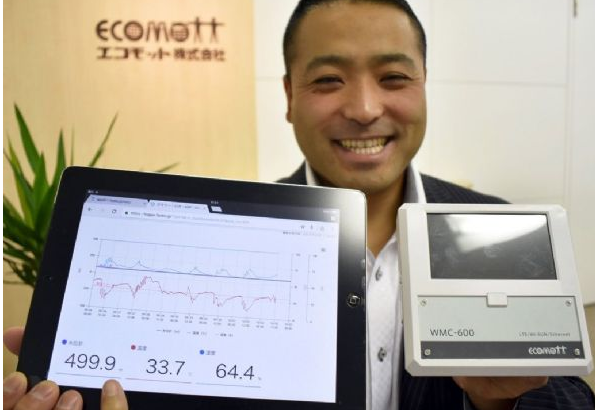The application of IT technology in Japan's aquaculture industry has attempted to become a potential industry with growth in response to problems such as reduced catches, aging workers, and insufficient manpower.
Since the beginning of August 2017, Sojitz's subsidiary, the two-day squid farm, has applied the Internet of Things (IoT) and artificial intelligence (AI) emerging technologies to improve the efficiency of squid farming, featuring deep learning and calculation. The automation of the number of squid is designed to optimize the feed cost of 70% of the cost of farming.
The carp fry weighs 300 grams per tail. The double-day squid farm Eagle Island purchases 10,000 tails a year and puts it in 30 cages. It weighs about 50 kilograms at the time of shipment. During feeding, it feeds up to 60 tons of fish feed per day. The amount and timing of feed feeding depends on the climate, season, and number of carp. The quality of the feed required for the growth of carp per gram is called the meat increase coefficient.
Generally, the meat increase coefficient of the squid is about 15 or so. The smaller the coefficient, the lower the cost of feeding. In order to reduce costs, it is necessary to correctly grasp the number of squid and invest the appropriate amount of feed to avoid waste, the amount of squid, and the overall shipments and fishermen's income.

In the past, the feeding amount of fish feed was judged according to the experience of the fishermen, but the judgment was easy to be inaccurate. Therefore, when the fishermen moved the large-sized squid to the large net cage every year, the image recording was performed, and then the image was repeatedly observed. This improves the calculation accuracy of the number of squid, but this method is quite time consuming.
The Double Day Salmon Farm teamed up with Dentsu International Intelligence Services (ISID) to develop a computing app that leverages deep learning to automate computing operations. The app also incorporates manual tuning and filtering to improve the system when a multi-tailed squid is side-by-side.
The use of RFID tags for individual management in the livestock industry is becoming more and more popular, because light is attenuated in water. Therefore, infrared sensors commonly used on land are difficult to use in aquatic organisms, while sonar in water can identify individuals. But the price is high, so I decided to introduce deep learning technology.
The Double Day Salmon Farm also collaborated with NTT Docomo and began experimenting in January 2018. It installs sensors near the farm to collect data such as seawater temperature and seawater dissolved oxygen in the cloud. These data can be further analyzed by AI analysis, which can further understand changes in currents and meteorology, and help to adjust the amount of feed.
In addition, the aquaculture industry has fully applied the aerial photography. The Saga Prefecture Sea Fisheries Synergy Group (Jf-sariake) and the IT industry operator OpTIm have introduced the application of fixed-wing UAVs and IoT technology since March 2017 to monitor the sea food farms. The empirical experiment, through the communication technology, can detect the growth status of sea vegetables early, in order to improve the quality of sea vegetables and reduce the burden of personnel costs.
The fixed-wing UAV has a maximum flight distance of 28 kilometers and has multiple flights. It photographs the seaweed net on the sea and stores the captured images in OpTIm's cloud system, and then performs subsequent image processing to see if there is any impact. Diseases or red tides (Red TIdes) grown in seaweed, and the information is immediately transmitted to the farmers, greatly reducing the burden on the past personnel to go around the sea farms.
IT technology is not only used in the first scene of aquaculture, but also extended to the wholesale and retail sales. Uopochi, a e-commerce website built by Japanese fish wholesaler Foodison, provides suppliers with the ability to upload photos and prices of products, allowing food and beverage outlets to refer to orders.
Uopochi's customer base is mainly store. In January 2018, Foodison cooperated with JR East Japan to promote the service to the general public. Consumers can order the fish on the Foodison website, and then pick up the goods at the store of Shinagawa Station Building. Through the digitalization of traditional industries, the industry with growth potential will be just around the corner.
Shenzhen Yidashun Technology Co., Ltd. , https://www.ydsadapter.com